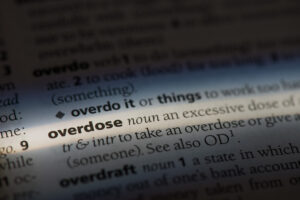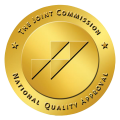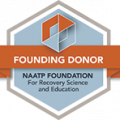Most addictive substances already have the potential to be life-threatening all on their own, particularly when taken in amounts that the body cannot handle. This particular fact is made even more alarming by the number of overdose cases in hospitals involving the mixing of addictive substances with other things, such as alcohol.
This lethal mixture is something that is not limited to the relative unknowns rushed to the emergency room listed as John Doe. In May of 2011, professional Canadian ice hockey player Derek Boogaard, then playing as left winger for the New York Rangers, was found dead in his room, reportedly from an accidental overdose of oxycodone and alcohol.
Even with precautions printed on the packages of popular medications, people continue to take substances with alcohol. Whether by habit or in the hopes of experiencing something else, this potentially lethal combination continues to be a threat to anyone who chooses to ignore the warnings from both physicians and pharmaceutical companies.
Why Should Alcohol Not Be Mixed With Drugs?
 Alcohol moves in the body in the same way that medications do; they travel into the bloodstream and through the blood is circulated throughout the body. The effect is felt when it reaches the brain and nervous system.
Alcohol moves in the body in the same way that medications do; they travel into the bloodstream and through the blood is circulated throughout the body. The effect is felt when it reaches the brain and nervous system.
Alcohol is then metabolized by the body through the enzymes in the liver, and after that is removed from the body. Should the person have any other potent substance in the body and the liver is still metabolizing the alcohol, most of the substance is not metabolized or broken down, so it stays in harmful quantities in the body far longer than it should.
Even worse, there are medications or substances that actually change how the liver produces enzymes for the metabolic process. In other cases, some substances affect how the normal bodily processes function, including the signals sent by the brain to the liver that there is something that needs to be metabolized in the body.
This is why people who are chronic drinkers or have an alcohol abuse issue require increased dosages of medications just for it to work. It is also worth mentioning that the liver is vital in processing anything the body takes in, metabolizing what it can so that the substances are either absorbed by the body or disposed of.
Alcohol intake actually overworks the liver, and eventually destroys it. Without the metabolic process of the liver to help the body filter substances, anything that is even mildly toxic will affect a person’s health immediately. This includes the necessary medications that people need for conditions they may have.
Is Alcohol Intoxication Really Hazardous?
Alcohol intoxication occurs when there is so much alcohol in the system that the body’s filtration system is unable to process it quick enough, and so greater amounts get to body parts that should not be exposed to so much alcohol, such as the brain. When too much alcohol gets to the brain, even the basic life-supporting functions such as heart rate, breathing rate, and body temperature control start to be affected and might even be shut down.
Blood alcohol concentration (BAC) is the measure that determines how much alcohol is present in the blood at a given time. Depending upon certain factors, such as age, health, body weight, and tolerance, even a slight increase in the body’s BAC could start to affect the most basic of things, such as maintaining enough balance to stand upright and walk straight.
Most people live by the erroneous assumption that alcohol intoxication could be made better by just sleeping it off. This is not the case as one of the symptoms of intoxication is vomiting, and a person who vomits while sleeping could choke on it. This is because intoxication could also affect the portion of the brain that handles automatic body responses such as the gag reflex, which is tied in directly with vomiting.
The blood alcohol concentration percentage in the body is directly connected to the level of impairment that a person experiences while intoxicated:
0.0 – 0.05% = Mild impairment
- Slight impairment of speech
- Mild memory impairment
- slight impairment of coordination and balance
- Onset of feelings of relaxation
- Begins to feel sleepy
- Risk-taking is slightly increased
- Inhibitions begin to fade
0.06 – 0.15% = Increased impairment
- Susceptible to feelings of aggression or irritability
- Increased memory impairment
- Inability to focus
- Balance and coordination are impaired to the point where injury by falling is possible
- Slurred speech
- Sluggish movement
- Cognition, vision, and ability to drive are significantly impaired
- Risk-taking tendencies are more pronounced
- Promiscuous behavior becomes evident
- Changes in behavior
0.16 – 0.30% = Severe impairment
- Incomprehensible speech
- Balance is severely compromised to the point where walking is impossible
- Inhibitions are nonexistent
- No sense of safety or self-preservation
- Loss of consciousness is possible
- Involuntary vomiting occurs
- Possible incontinence
- Memory gaps manifest
- Judgment and decision-making dangerously impaired
- Hallucinations
- Delusions
0.31 – 0.45% = Life-threatening
- Loss of consciousness
- Prolonged unconsciousness
- Unresponsive to efforts to be woken up
- Danger of alcohol overdose
- Blood alcohol at dangerously toxic levels
- Possible death due to suppression of vital life functions
Considering all of these dangerous effects, it is no wonder why some people succumb to a fatal overdose when alcohol is mixed with another substance, as alcohol on its own could already become lethal.
What Are the Signs of Oxycodone Overdose?
 Oxycodone belongs to a group of drugs called opioids. These drugs are synthetic derivatives from the opium poppy and are prescribed by doctors as a treatment for severe pain. Oxycodone typically comes in a variety of forms for easy use, such as capsules, tablets, liquid form, and suppositories.
Oxycodone belongs to a group of drugs called opioids. These drugs are synthetic derivatives from the opium poppy and are prescribed by doctors as a treatment for severe pain. Oxycodone typically comes in a variety of forms for easy use, such as capsules, tablets, liquid form, and suppositories.
In people who take oxycodone by prescription, addiction typically begins because they develop a tolerance for it, and therefore require higher doses just to feel its effects. Physicians are rarely, if at all, consulted before the doses being taken are increased.
People who abuse oxycodone do so because of the sensations they feel while high on it, including:
- Feeling of euphoria
- Reduced anxiety
- Increased confidence
- Increased relaxation
- Drowsiness
- Pain relief
However, just like any other drug or medication, oxycodone does come with side effects that are anything but pleasant:
- Dizziness
- Fatigue
- Confusion
- Inability to concentrate
- Restlessness
- Stiff muscles
- Constipation
- Dry mouth
- Stomach pains
- Nausea
- Bradycardia (slowed heart rate)
- Profuse sweating
- Flushing (reddening of skin)
- Itching or mild allergic rashes
As oxycodone belongs to the substance group that affects how a person feels, and ultimately perceives things, it is immensely easy for the usage to cross over into overdose territory. There are some symptoms that will not typically manifest in oxycodone users unless they are already overdosing on it, including:
- Chest pains
- Constricted or small pupils
- Impaired awareness or responsiveness
- Loss of consciousness
- Stupor
- Irregular heart rate
- Extreme drowsiness (if still conscious)
Any of these symptoms already warrant immediate medical attention or a visit to the emergency room of the nearest hospital. In many cases, these symptoms occur simultaneously, indicating that the person is already in a life-threatening phase of overdose.
What Are the Effects of Oxycodone Mixed With Alcohol?
The most dangerous consideration for mixing oxycodone and alcohol is the possibility of an overdose and death. This is the same consideration for any kind of mixture done between substances, which is why there are always precautions and indications on the labels or packaging of prescription medications.
The other side effects of combining the two substances, apart from the manifestation of their individual side effects, include:
- Bradypnea (slowed breathing)
- Nausea
- Bradycardia (slowed heart rate)
- Accumulation of fluid in spine and brain
- Constipation
- Impaired vision
- Varying levels of dizziness
- Dehydration
- Impaired coordination
- Loss of consciousness
- Changes in blood pressure
- Unusual behavior
- Vomiting
- Coma
Is There Treatment Available for Oxycodone and Alcohol Abuse?
 A substance abuse issue that involves two different substances is called polydrug abuse, and there are specialized treatments available for people who suffer from this. There is a need for immediate medical attention for this condition as it may also give rise to other co-occurring disorders, as the use of two or more substances significantly increases the damage done by substance abuse.
A substance abuse issue that involves two different substances is called polydrug abuse, and there are specialized treatments available for people who suffer from this. There is a need for immediate medical attention for this condition as it may also give rise to other co-occurring disorders, as the use of two or more substances significantly increases the damage done by substance abuse.
Polydrug abuse often affects the person profoundly, creating significant changes in their behavior, way of thinking, and how they relate to others. There is a need to address these issues with the help of a specialist and through clinical methods.
Cognitive Behavioral Therapy
Whether it be due to the person’s willingness to engage in fun that associates are into, or if it is due to a problem or trauma that they can’t handle, polydrug abuse is nothing other than an unhelpful way of thinking. Cognitive behavioral therapy (CBT) is a form of therapy that identifies these unhelpful ways of thinking, as well as unhelpful behavior, and makes the person realize the harm that it does to them and those around them.
By gaining a better understanding of how damaging unhelpful ways of thinking and behaving are in a person’s life, the person with polydrug abuse is made to confront their role in identifying their own bad habits. Once these are identified, a more targeted approach to dealing with them could be arrived at in therapy.
Dialectical behavior therapy
Dialectical behavior therapy (DBT) is a modified version of CBT that helps a person develop better coping skills with issues and stressors that might be the cause of why they abuse substances. This form of therapy also plays a large part in moving forward in rehabilitation and recovery.
DBT also plays a large role in ensuring that a person is less prone to a relapse when faced with the stressors and issues that often made them use substances before. In many instances, people who completed rehabilitation often fell into a relapse because of an inability to deal with issues once they left the treatment facility. DBT will help in building their confidence to choose a better response and to cope better with stressors and issues.
The Journey to True Recovery Starts with First City.
A journey could be long or short, easy or difficult, winding or straight, but the commonality in all journeys is that it has a start, and it is toward a destination. We here at First City Recovery do our best to make sure that the destination is clearly in sight for all of our patients, because that destination is recovery.
We will walk beside anyone who needs help in their journey to recovery, because we know how important that is. Call us now.
















